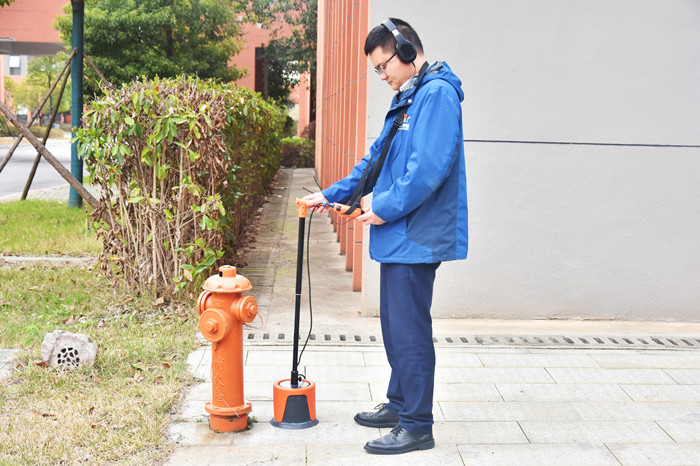In urban infrastructure, underground piping systems are like the blood vessels of the human body, responsible for transporting water resources, gas, communication signals, etc. and maintaining the normal operation of the city. However, with the passage of time and the influence of the external environment, underground pipes may develop cracks or breaks, leading to water leakage problems. Water leakage not only causes waste of resources, but also may cause damage to the surrounding environment and building structures. Therefore, accurate and efficient identification of leaks in underground pipelines has become the key to maintain the health of urban "lifelines". In this paper, we will discuss several effective water leakage detection methods, showing how technology and skills can work together to solve this challenge.

1、Acoustic pipeline leak detector localization method
Acoustic pipeline leak detector localization method is currently one of the most widely used underground pipeline leak detection technology. When the pipeline leakage occurs, the flow of water will produce a specific frequency of sound waves, these sound waves will be propagated along the pipeline and soil. Using a professional pipe leakage detector, these weak sound wave signals can be captured at ground level through its built-in high sensitivity microphone. The instrument will digitize the collected acoustic signals and pinpoint the location of the leakage point by analyzing the frequency, intensity and propagation direction of the acoustic waves. This method is especially suitable for metal pipes and pipes near the ground leakage detection.
2, infrared thermal imaging method
Infrared thermal imaging technology utilizes infrared photographic equipment to capture the temperature changes around the underground pipeline and display them in the form of thermal image. When a pipe leaks, the moisture will change the thermal conductivity of the soil, resulting in a difference between the temperature near the leak and the surrounding environment. The thermal imaging camera is able to keenly sense these temperature changes and quickly locate the leakage area through comparative analysis. This method is particularly suitable for deeper pipelines and large-scale water leakage detection projects.
3、Gas tracer pipeline leak detector method
Gas tracer pipeline leak detector method is a special gas (such as hydrogen) as a tracer detection technology. The tracer gas will be injected into the pipeline system, when the pipeline leakage, the gas will escape with the water flow, to the soil diffusion. Due to the small molecular size of the tracer gas, it can quickly penetrate the soil and rise to the surface. With specialized detection equipment, the concentration of the tracer gas can be detected on the ground to determine the approximate location of the leak. This method is applicable to all types of pipelines, especially in the complex geological conditions of outstanding performance.
4、Pressure test method
The pressure test method determines whether there is a leak in a pipeline by establishing an abnormal pressure in the pipeline system and observing the speed and pattern of pressure drop. First, the piping system is divided into a number of independent segments, and then the segments are pressurized separately to observe changes in the pressure gauge readings. If the pressure drops abnormally fast in one section of piping, it indicates that there may be a leak in that section of piping. This method is simple and direct, applicable to the initial screening and positioning of large piping systems in the leakage point.
5, correlation meter detection method
Correlation meter detection method is an advanced detection technology based on the principle of acoustic wave propagation. Sensors are placed in two different locations in the pipeline, and when a leak occurs in the pipeline, the sensors will capture the acoustic signal and calculate the time difference between the two sensors of the acoustic wave arrival. By analyzing the relationship between the time difference and the length of the pipe, the exact location of the leak can be calculated. This method is highly accurate and suitable for leakage detection of long-distance pipelines and complex pipe networks.
Underground pipe leakage detection is a complex work with high technical content and wide coverage. With the continuous progress of science and technology, more and more advanced detection technology is applied in practice, greatly improving the detection efficiency and accuracy. From acoustic localization to infrared thermal imaging, from gas tracing to pressure testing, each method has its unique advantages and applicable scenarios. In the face of increasingly complex underground pipeline network structures, the comprehensive use of multiple inspection methods, combined with specialized knowledge and rich experience, is the key to ensuring the healthy operation of urban underground pipeline systems, reducing the waste of water resources and protecting environmental safety. In the future, with the development and application of more intelligent and automated detection technologies, underground pipe leakage detection will become more accurate and efficient, providing strong technical support for the maintenance and upgrading of urban infrastructure.








